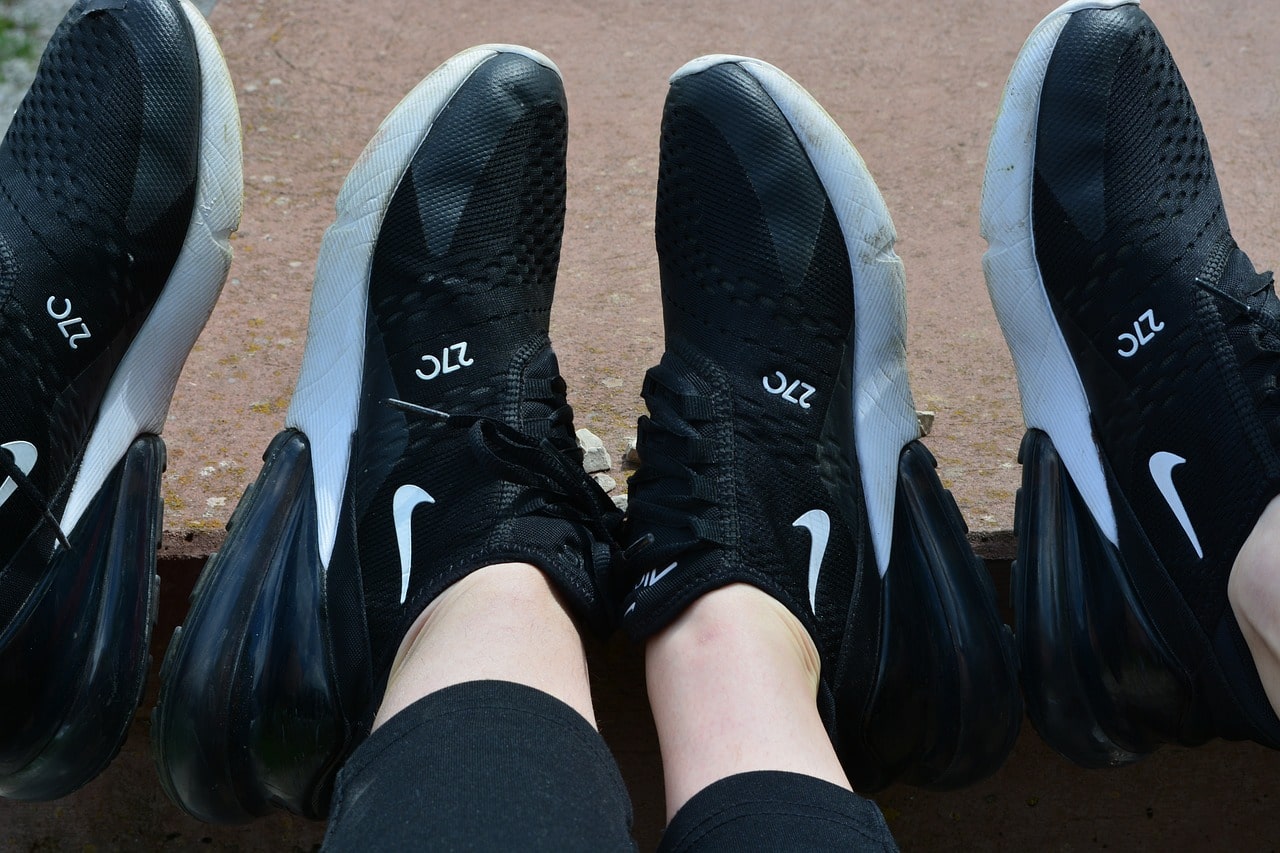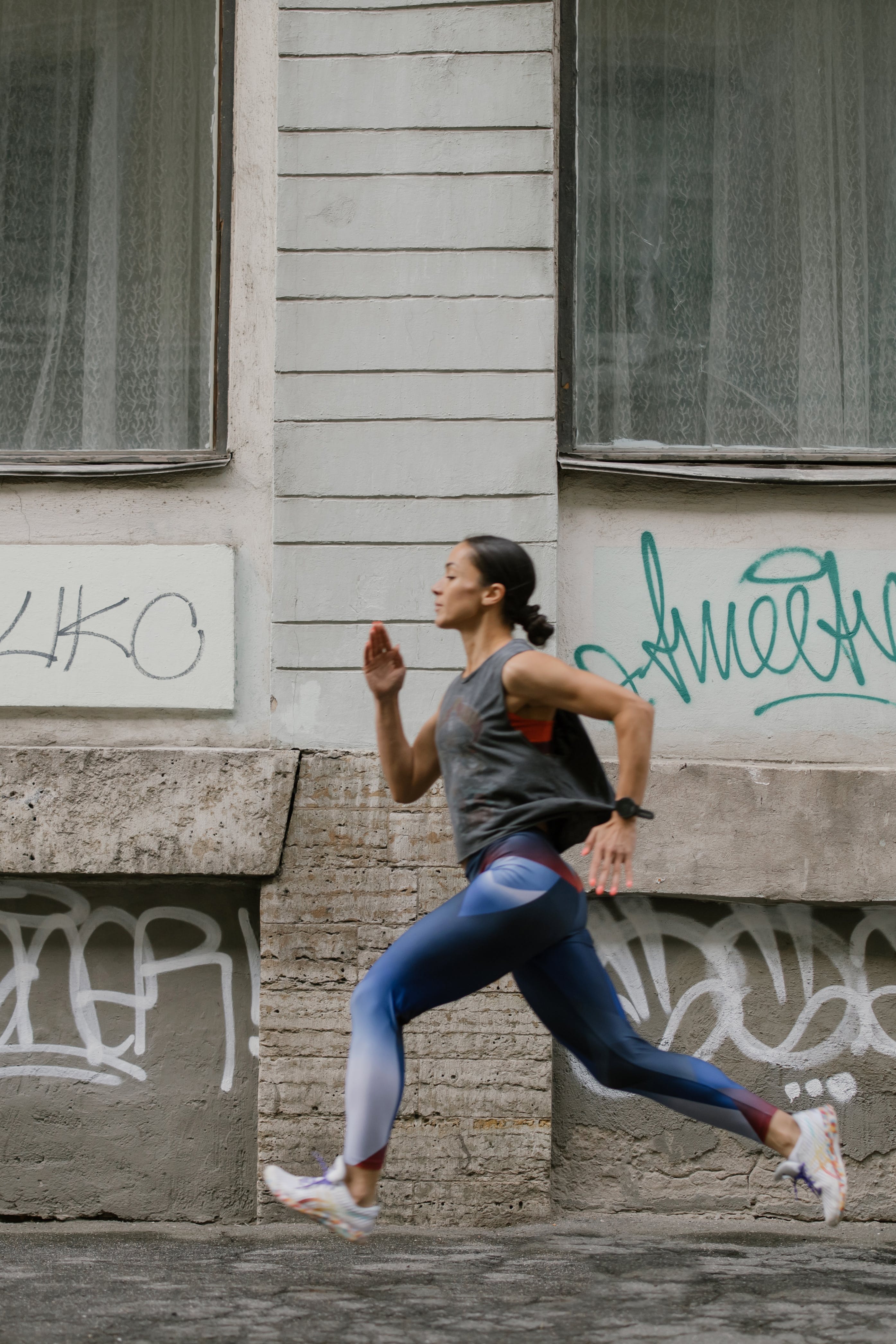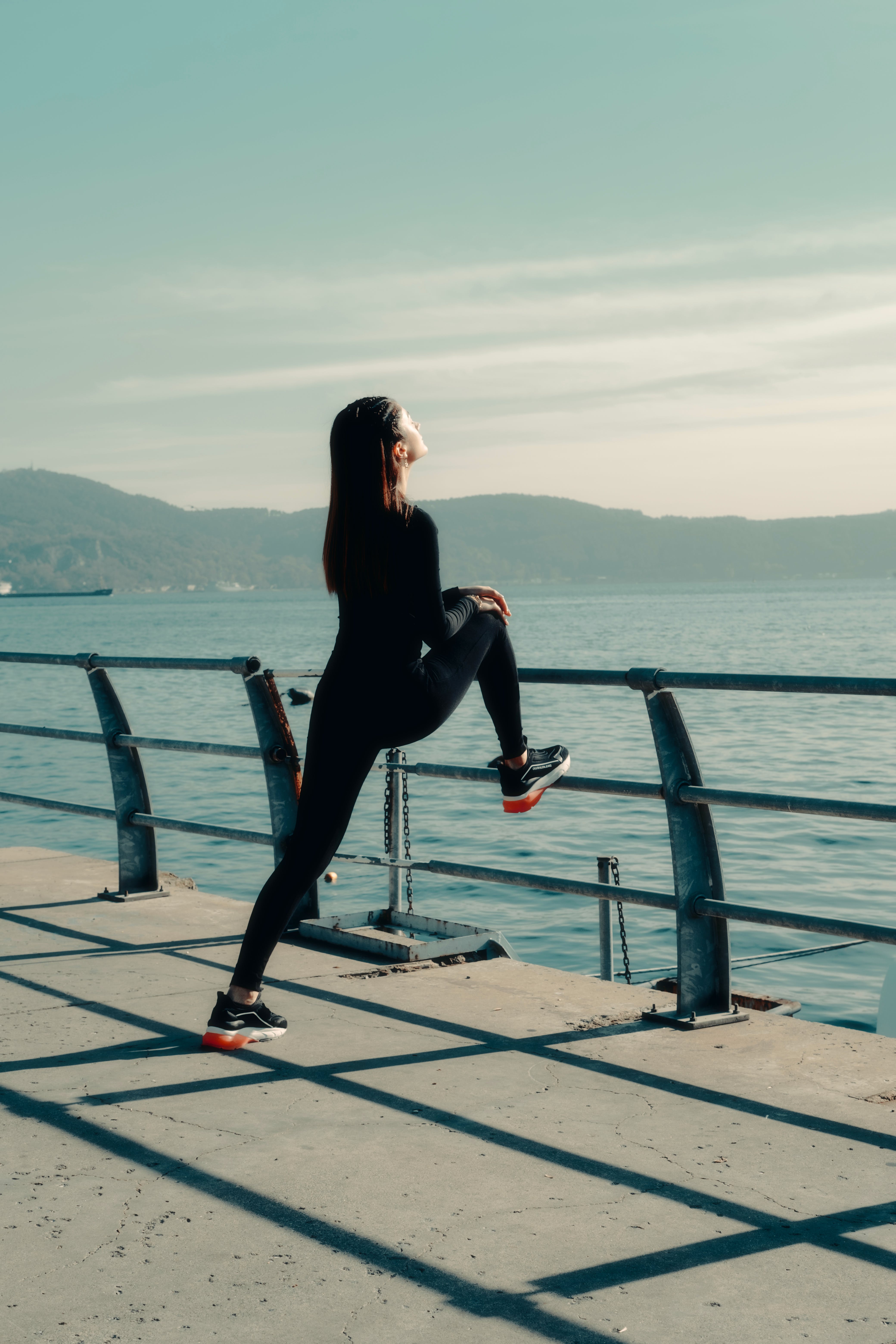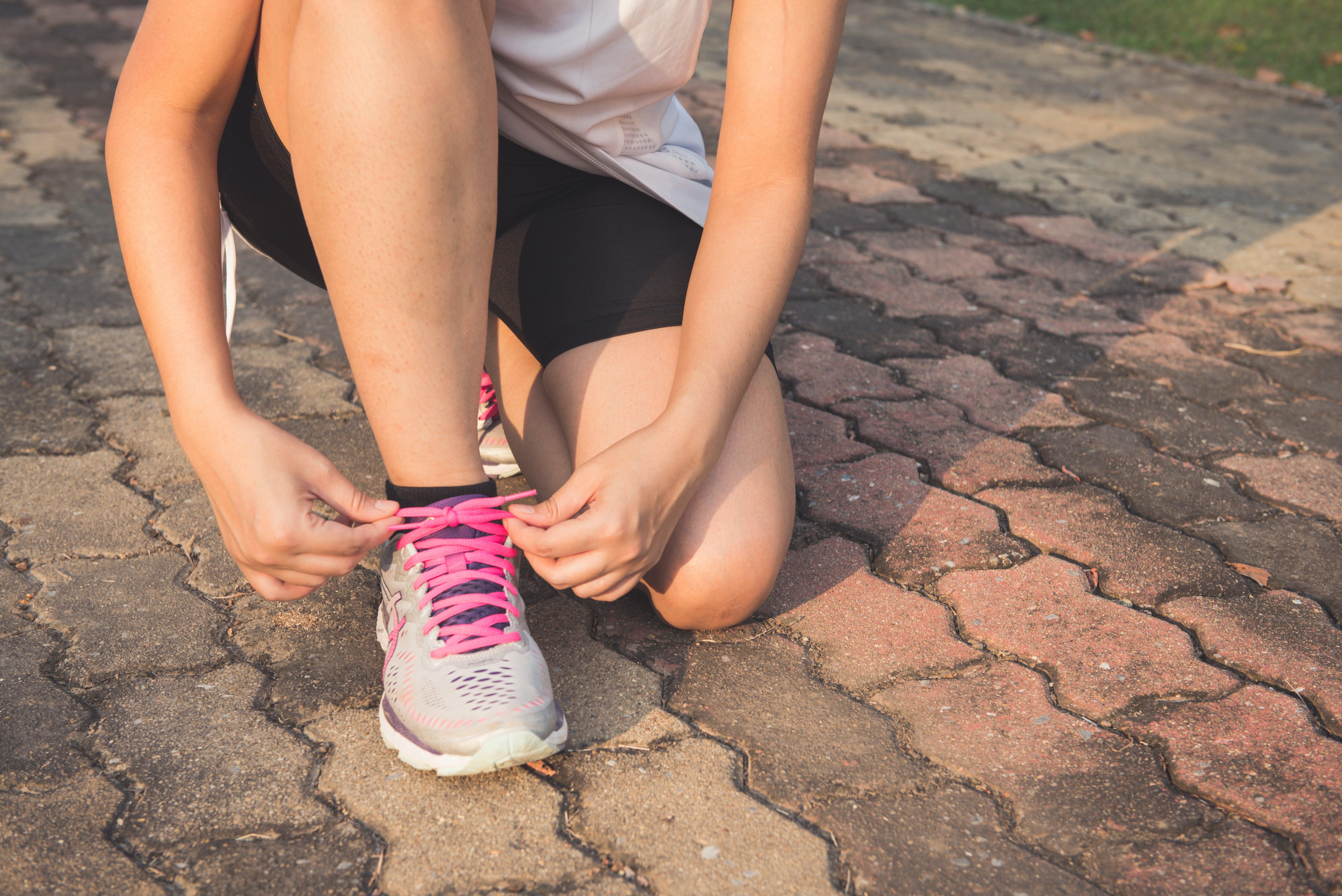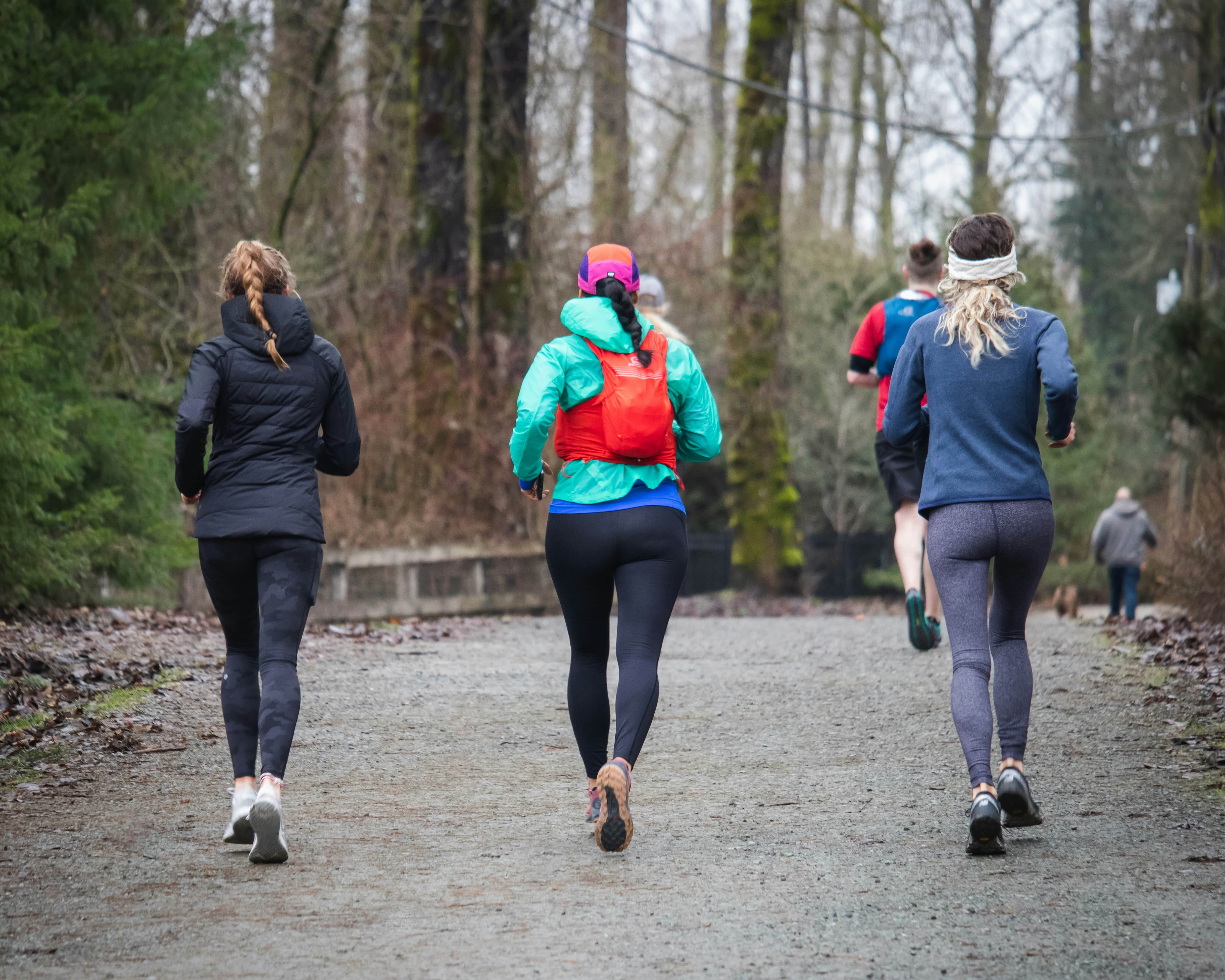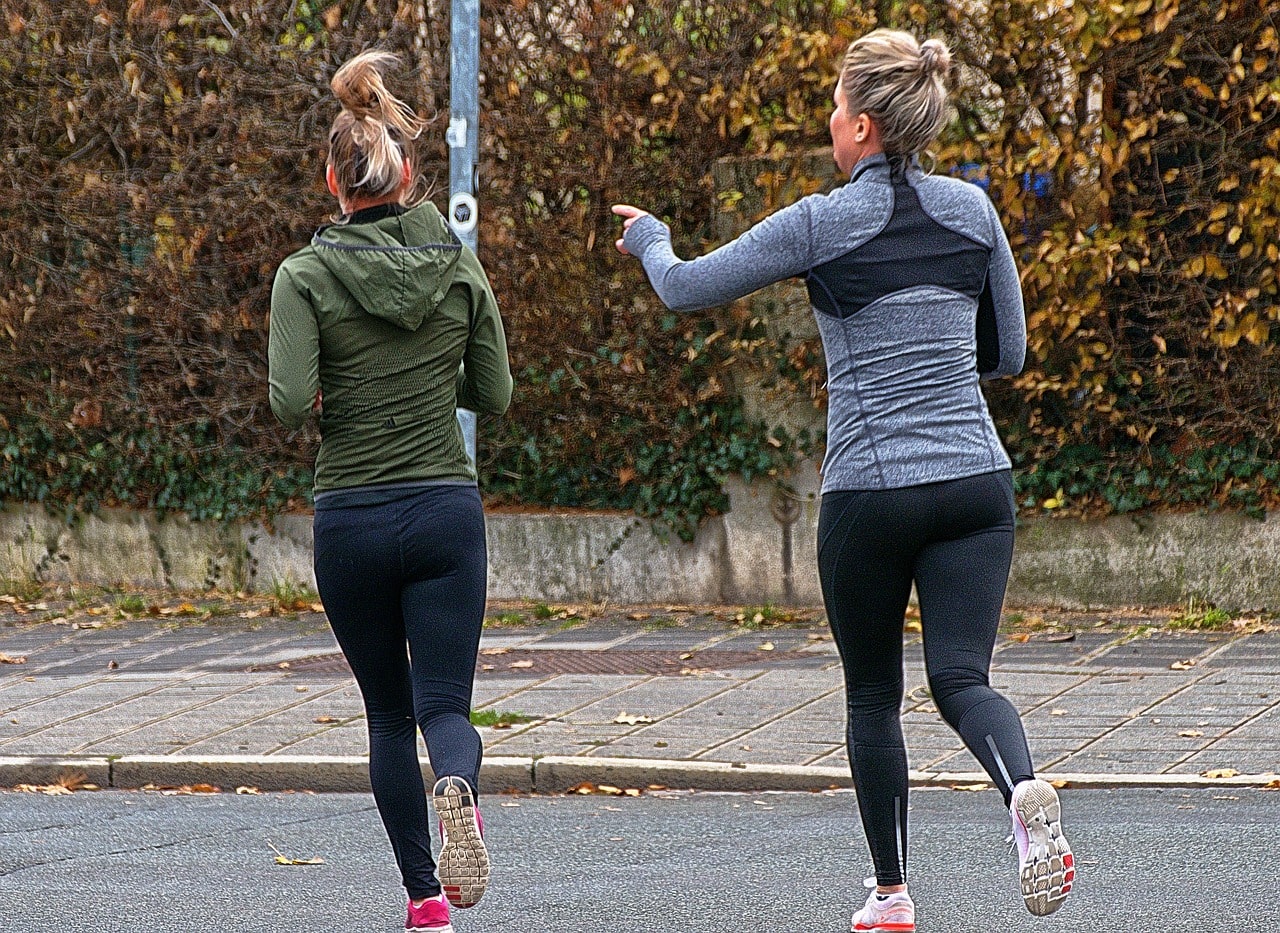Running has grown tremendously in popularity among women over the past decade. As more women have taken up running for fitness, competition, and overall health, the market for women's-specific running shoes has expanded as well. The right pair of trainers can make all the difference in comfort, performance, injury prevention and achieving running goals.
When shopping for running shoes, female runners have considerations that may differ from male runners. Women tend to have narrower heels, higher arches and smaller feet on average. The latest engineering and designs in modern women's running shoes takes these differences into account. Advanced cushioning, support and breathability features are shaped specifically to provide an ideal fit and running experience for the female foot.
Choosing the best women's running shoe depends on several factors, including your foot type, running gait, training routine and races you are preparing for. Runners training for 5Ks, half marathons or marathons will need shoes with ample stability, cushioning and responsiveness over long distances. Trail runners require grip, with reinforced toe caps on uneven and loose terrain. Racing flats provide lightweight speed for shorter distances. Understanding these key components helps narrow down the extensive options in women-specific trainers.
In the following sections we will explore what to look for in women's running shoes, break down top brands and models, suggest trainers for different running needs, cover size and fit guidance, and provide care and maintenance tips. Investing in a quality, high-performance shoe can benefit every female runner, from casual joggers to competitive racers. Use this guide to help select your ideal pair.
Choosing the Best Women's Running Shoes
Choosing a running shoe these days can seem overwhelming, but understanding a few key criteria helps simplify the process. Consider these factors as you shop for women's running shoes to best match a model to your individual needs and running style:
Foot Type
While everyone likely assumes their feet are “normal”, three main foot types can help determine proper support in a women's running shoe. Neutral feet have medium-to-high arches and lands evenly when walking/running. Overpronators have flat feet and ankles that roll inward excessively. Underpronators have very high arches and strike the ground primarily on the outsides of feet. Women should have their feet properly measured and analysed by gait at a Runners Need store.
Cushioning
The midsole of foam cushioning absorbs shock and reduces muscle fatigue and joint impact. Neutral runners generally need moderate cushioning. Underpronators require extra-cushioned shoes to encourage foot inward roll. Overpronators do best in stability shoes with denser cushioning on inner edges.
Stability
Stability shoes provide correction for overpronation with reinforced arch support and dual-density midsoles. Neutral runners can opt for more flexible neutral-cushioned models. Underpronators likewise need neutral models allowing natural outward foot roll.
Weight
In general, lighter shoes encourage faster paces, while heavier trainers provide durability for higher mileage. Racing flats and minimalist shoes weigh 6-8 oz., traditional trainers 8-12 oz. Maximalist cushioned shoes are 10-13 oz. Choose weight based on your running needs.
Outsole Lugs
Trail shoes have deep flex grooves and multi-directional lugs for uphill/downhill grip over rough terrain. Road runners only need moderate front/back grooves to allow smooth transitions. Consider outsoles suiting your main running surfaces.
Toe Box
Ensure adequate room up front for toe splay and swelling that occurs when running long distances. Too narrow a toe box causes painful black toenails and blisters.
Flexibility
The shoe should bend at the ball of your foot, not in the middle of the arch. An inflexible shoe strains feet and calves. The flexibility should match your foot type.
While these basics help narrow choices, always be sure to test run shoes before buying. Comfort ranks high when miles add up over months and years. Finding the optimal blend of fit, cushioning, support and durability ensures happy feet ready to carry you to your running goals.
Types of Women's Running Shoes
The running shoe category continually evolves with new styles and technologies introduced every year. Even with frequent innovations, most women’s running shoes still fit within these well-established categories:
Neutral Cushioning Shoes
Ideal for neutral runners with medium-to-high arches, these shoes provide ample midsole cushioning to absorb shock. They allow the foot to roll inward naturally a moderate amount and offer basic medial support from dual-density foam. The flexible design encourages a natural gait cycle. These versatile trainers work well for most runners across varying distances on roads. Example models include the Brooks Ghost, Nike Pegasus and Saucony Ride.
Stability Running Shoes
Designed specifically for overpronators, these trainers have firmer, dense foam built into medial edges countering excessive foot roll. Some feature reinforced arch supports, straighter shoe lasts, and an extended “post” section for correcting inward ankle roll during ground contact. Heavier than neutral options, these provide necessary motion control for flat-footed runners. Top picks like the Asics GT 2000 series accommodate mild to moderate overpronators.
Maximum Support/Motion Control Shoes
Severe overpronators require the strongest stability and pronation correction. Maximum support models feel rigid, built with straight lasts, dual/triple density midsoles, stabilising posts and reinforced heel counters. Although not as cushioned or flexible as neutral shoes, they guide biomechanics keeping heavy pronators upright, aligned and less prone to knee or hip injuries. Recommended for heavier runners and orthotic wearers. Examples include the Brooks Addiction.
Lightweight Trainers
Also called “fast twitch” shoes, these feature ultra-light materials to keep weight between 6-8 oz., reduced midsole cushioning, minimal upper construction and semi-curved shape encouraging speed. The decreased weight facilitates faster leg turnover, making them ideal for racing 5Ks up to half marathons and track workouts focused on PRs. The trade-off comes in cushioning, being best for young, efficient runners without injuries. Nike’s Zoom Streak series specialises in racing flats.
Trail Running Shoes
Rugged trail shoes equip runners for slogging through mud, splashing creeks and climbing packed dirt mountains. Aggressive multidirectional lugs on sticky rubber outsoles bite into loose ground. Protective toe caps, anti-debris mesh upper and high abrasion rubber defend against roots, rocks and other obstacles. Cushioning tames uneven terrain but a stabilising platform keeps runners grounded across angled slopes. Top women’s options are the Brooks Caldera and Saucony Xodus.
Maximal and Ultra Cushioning Shoes
Two camps exist in the foam wars — maximalist and ultra cushioning shoes that pile inches of midsole below feet. Maximalist models like the Hoka One One Bondi feature wide platforms tapering at ends for stability. Ultra shoes remove rubber outsoles for lower weight, have evenly thick full-length midsoles and encourage mid/forefoot strike. Both focus on cloud-like cushioning for ultrarunners and heavier runners managing joint pain. Altra specialise in zero-drop ultra models.
Top Women's Running Shoe Brands
Many brands now design and build innovative, stylish, high-performance running shoes tailored specifically for female runners and their unique needs. Let’s explore some of the top names leading in women’s-specific models across neutral, stability and specialty categories:
Founded 1914 in Philadelphia, Brooks prides itself as a leading running company dedicated to injury prevention via biomechanical research. Their shoes consistently earn high marks for cushioning, support and durability – key reasons recreational and competitive runners remain loyal year after year. Top women’s models include the Ghost (neutral), Adrenaline GTS (stability) and the Hyperion Tempo (speed).
Japanese shoe engineers at Asics (Anima Sana In Corpore Sano) have advanced running shoe technologies since 1949, applying meticulous craftsmanship and designs promoting runner health. Asics GTPulse technology in models such as the Nimbus (neutral) and 2000 series (stability) optimises running efficiency. Their research also lead to the development of Gel and FlyteFoam cushioning.
Specialty running brand Saucony originated in the late 1890s as a rubber footwear company in Kutztown, Pennsylvania. Leadville and Peregrine trail shoes are adored for their unbeatable traction. The Ride, Triumph and Hurricane represent their core road lineup balancing responsiveness, cushioning and stability. Their FORMFIT technology ensures female-specific shape and support.
Since making arch support inserts in 1906, New Balance gained steady popularity through the 20th century for catering to runners requiring narrow sizes and orthotics. Their technical yet sporty styles appeal widely as a lifestyle brand while satisfying performance needs via premium Fresh Foam models like the 880v12 (neutral) collection made of recycled materials.
Founded 2009 in France, Hoka distinguishes itself with thick midsoles and maximal cushioning for ultrarunning. The exaggerated foam height, broad platform and MetaRocker geometry encourage low-impact rolling stride, making them ideal for runners who prioritise extreme comfort over miles. The Clifton and Bondi series serve as intro models to their unique feel.
Key Women's Running Shoe Models by Brand
Now that we covered what to look for in running trainers suited to female runners’ needs, let’s examine some of the most popular, top-rated road and trail models that regularly rise to forefront across annual buyer’s guides and reviews. While personal fit and comfort should rank first, this breakdown gives a starting point of leaders embracing latest innovations.
Brooks Women's Choices
Brooks Glycerin GTS 19 – Ultra-cushioned daily neutral trainer packing DNA LOFT v3 and segmented crash pad catering to medium/high-arched runners requiring optimal shock absorption from heel to toe over moderate to high mileage.
Brooks Adrenaline GTS 22 – Overpronators require this stability icon with GuideRails support frame technology controlling excess movement. Plush interior surrounds feet in seamless comfort that can easily rack up marathons.
Brooks Caldera 5 – Rugged trail shoe ready to dig into dirt and blaze new paths. Durable mesh uppers wrapped with protective synthetic overlays. Trail-specific outsole lugs navigate unpredictable terrain. Supportive cushioning eats ups Evaluate terrain. miles outside pavement.
Brooks Hyperion Tempo – Light and fast with DNA FLASH foam underfoot returns energy with each toe-off at 7.2 oz weight. Part of Brooks' hyper performance lineup aimed at propelling PRs for racing and speedwork. Low drop design trains mechanics.
Asics Top Women’s Picks
Asics Gel-Nimbus 24 – Legendary neutral option winning over runners since 2002 upgraded with full-length FlyteFoam Propel and 4mm gel units absorbing shock. Mesh uppers integrate modern stylish flair while interior remains plush.
Asics GT-2000 10 – Best-selling stability stalwart employs classic technologies helping overpronators including I.G.S.® system, rear/forefoot Gel® cushioning units, and Dynamic DuoMax® Support System – to deliver adaptive support mile after mile for runners needing pronation control.
Asics MetaSpeed Sky – Carbon plate super shoe joins speed ranks via propulsive GuideSole curvature saving energy while Flytefoam Blast foam and SpaceTruxtM provide lively soft landings. Lightweight performance for racing 5Ks to marathons.
Asics Trabuco 10 - Injected EVA midsole atop high-traction outsole maintains stable footing when banking turns on loose trails. Quicklace® closure system fits feet securely inside protective uppers. Gel inserts retain comfort through the roughest terrain.
Choosing the Right Women's Running Shoe Size and Fit
Finding not just the right shoe model, but the proper size remains critical for comfort, toe wiggle room, support and injury avoidance when road miles add up. While methods exist for determining standard shoe size, certain best practices apply specifically to dialling in the fit of running shoes. Follow this guidance to select the ideal size trainer for your runs:
Know Your Exact Size
Do not assume you uniformly wear the same size across shoe brands or styles. Feet change shape across the day and through various life stages. Regularly check your measurement using a Brannock device for accurate length and width instead of relying on old faithful size. Measure at end of day when feet are most swollen after standing. Both length and width matter for perfect fit.
Try Shoes On
This remains non-negotiable when selecting running shoes. Don’t order online without having checked the model’s fit. Visit Runners Need stores where our experts evaluate your gait, arch type, pronation and compare options suited to your mechanics. Ensure heel sits securely in the counter without slipping. Toes need adequate room to splay landing and push off while avoiding excessive space allowing sliding. Your foot should feel centered on the platform without edges touching edges of sides. Understanding these elements requires physically trying on options to gauge ideal size.
Shop Later in Day
Feet swell on average half a size during day as blood flow increases and water retention occurs. Trying shoes on at end of day replicates sizing for how they’ll fit logging long miles. Thumb room gives toe space needed on a 3 mile run that might pinch uncomfortably approaching 20 miles. Purchase based on your “long run feet” size.
Wear Socks/Inserts
While trying models, be sure to wear running socks you’ll use for regular training, including any custom orthotics or inserts you may need. This accurately provides expected fit factors with those items that alter sizing ever so slightly. Socks make a small but noticeable difference, enhancing comfort and wicking during miles.
Lace Up
Fully secure shoes by lacing tightly on first try-on for real test. Circulation and swelling shifts the delicate balance of snugness. A too-loose test leaves you guessing about changes occurring en route. Ensure tongues stay centered, no heel slippage at counter and no crowding in toe box when properly laced before confirming size feels right.
Consider Use
How you plan to use shoes helps determine ideal fit factors also beyond basic size. Trainers for long ultramarathons need extra toe room allowing swelling over many hours. Trail shoes fit slightly more secure medially (straighter lasts) keeping footing stable on uneven terrain requiring constant micro-corrections. Track racers require a glove-like compression fit for maximum response when chasing PRs. Understand demands helps fine tune size requirements.
Mind Your Gait
Custom orthotics or supportive insoles influence fit which sizing accommodates. Likewise, overpronators needing stability shoes typically fit a half size up to allow orthotics or might consider wide sizes. Narrow-footed runners sometimes size down a half or select wide models offering better midfoot lockdown with adjustable lacing. Consider individual gait when dialling in specifics.
Recheck Fit
Feet change over time, making it prudent to recheck fit every 300-500 miles replacing running shoes. As foam compresses and stabilising features wear down, feet require updated support. Take advantage of analysis every purchase cycle ensuring current size and model match maturity or conditioning changes helping avoid discomfort or injury. Smart runners regularly monitor fit.
Caring For and Extending Life of Women's Running Shoes
Runners log hundreds of miles over months and years in favourite tried-and-tested models before being forced to retire trusted trainers once midsoles compact or outsoles wear bare. Preserving performance and longevity of a preferred women’s running shoe includes employing these key maintenance tips:
Let Shoes Air & Dry Out
Never store damp shoes crammed inside a gym bag. Trapped moisture from sweating leads to bacteria and fungi growth causing unpleasant odours and deteriorating material. Always let shoes dry 24 hours between runs. Lightly stuff toe box to maintain shape without crunching compromise.
Wash Insoles Regularly
The one piece exposed to most pounding sweat deserves the most frequent cleaning. Machine wash removable sockliners weekly in gentle, cold cycle then air dry to avoid shrinkage. Reinserting refreshed inserts revives interior freshness so feet and shoes feel like new for many miles.
Sanitise & Deodorise
Freshen shoes between washes by generously dusting with anti-fungal spray powder or layering odour absorbers like cedar chips into soles when not being worn. UV wands zap microscopic bacteria and won't degrade materials like direct sunlight. Avoid potent fragrances that simply cover up instead of killing germs or mould.
Check Wear Points
Outsoles reveal most abuse taking each step. Inspect carbon rubber lugs for thinning depth or smoothness losing traction pattern indicating time to transition so rotating extends overall lifespan. Dull toecaps likewise show excess abrasion on trail models requiring replacement. Keeping tabs on deterioration helps determine usable miles left.
Wash Uppers
While foam midsoles largely remain “hand wash”, durable mesh uppers handle gentle machine cycles for refreshing facelift when dirt, grime or salt buildup accumulates over weeks of mileage. Remove laces and insoles first, then wash with like colours in cold delicate setting. Air dry naturally. Restored exterior aesthetics revive beloved older models.
Replace Laces
Clean laces maximise snug fit dialling down pressure on aging support features. Shot elasticity loses ability to secure feet leading to discomfort and injury. Periodically inserting fresh matching laces renews lockdown while preventing eyelet blowout and prolonged life in older shoes still feeling broken-in perfect.
Use Multiple Pairs
Rotating different model shoes daily reduces repetitive stress each pair sustains by spreading wear and tear over twice as long averaging 500-800 miles total. Mixing profiles strengthens stabilisers, reduces injury and keeps cushioning lively longer before compression. Plan 2-week rotations to maximise per-cost value from trainers.
Seek Expert Guidance
Rather than guessing when accumulated miles indicate time to replace worn models yourself, seek guidance from Runners Need, inspecting tread depth, midsole stiffness and integrity of support. Our experts’ trained analysis takes guesswork out ensuring continuing foot health.
Prioritising care preserves integrity of women’s running shoes so they deliver consistent comfort and support over hundreds of training miles. Investing a little regular TLC ultimately saves money allowing trusted models to meet changing demands as runners increase weekly distance or take on new challenges requiring peak performance from equipment. Show feet and trainers a little love.
We covered extensive ground detailing the intricacies that go into choosing ideal running shoes to meet female runners’ unique needs. While advanced technologies and components described here perform magic making miles feel easier, the basic criteria remains ensuring chosen models fit your feet and running style properly. No amount of research overrides the personal testing of options feeling correct for your training.
The information provided throughout this guide aimed to educate women on critical considerations from foot shape, typical models serving pronation factors, differences among shoe types and leading brands embracing female-specific design elements across neutral, stability and specialty categories. Outlining popular models gives reasonable starting points to compare, but personal thighs-on trial rules over anything testing teams suggest top rated.
Hopefully studying features like weighing minimalist racers vs maximal cushioning clarity guides runners through an increasingly crowded marketplace saturated with performance claims in fit ads and reviews. Even decode advanced jargon detailing upper knits, foam compounds and plate material matters less than slipping on try-ons checking flexible toe box room, overall security and signature ride feeling intuitive within few steps travelled in store.
While breakdowns by Nike, Brooks and Asics highlight notable technologies built into revamped 2023 versions of Pegusus, Adrenaline and Cumulus lines, tread patterns and medial posts matter less than tapping into durability records of models logging personal miles across our vast network of local runner communities. Leaning on that tribe gets you solid recommendations beyond marketing speak.
Ultimately no amount of expert suggestions around fit guidelines, maintenance tips nor brand familiarity replaces learning your own feet and visiting Runners Need stores armed with questions. Building relationships there pays back dividends in future checks dialling in evolving fits as feet change shape through life stages and accumulated miles impacting cushioning needs. Our pros coach you through injury rehab, Marathon PRs and everything between over years in trusted trainers.
Chasing incremental improvements on Strava or shaving seconds off pace feels awesome, but loses meaning without essential foundation footwear fitting properly, matching running mechanics and absorbing hard-earned miles comfortably. Allow this guide to inform bigger decisions ahead choosing ideal models catering to women’s needs through an increasingly crowded marketplace. Then utterly ignore everything suggested here blindly once discovering pairs proving themselves worthy across training cycles, garbage miles and sharpening weeks preparing for race day. Only shoes broken-in blister free and odour resistant earn elite status as rotation mainstays. Nothing tops tread records logging double digit thousands marking years together.
Hopefully this overview gives female runners confidence navigating options personalised matching distinct needs based on individual arch, gait and disciplined mileage appraising shoes on own terms. Those pillars support everything built atop essentially uniting women reaching new distances as modern running boom progresses. We stand on shoulders of giants creating first women's-specific retro runners making jogging socially acceptable then accessible evolving designs tackling studio treadmills and marathon podiums alike. Progress lifts all runners. Here’s to the next innovation sure to again revolutionise equipment we strap on pursuing personal bests feeling comfortably supported, securely centered and optimally cushioned achieving goals once unfathomable. Let’s continue making strides ahead while giving a nod backwards appreciating support underneath record breaking achievements destined ahead in women’s running rich legacy.
Related Articles

